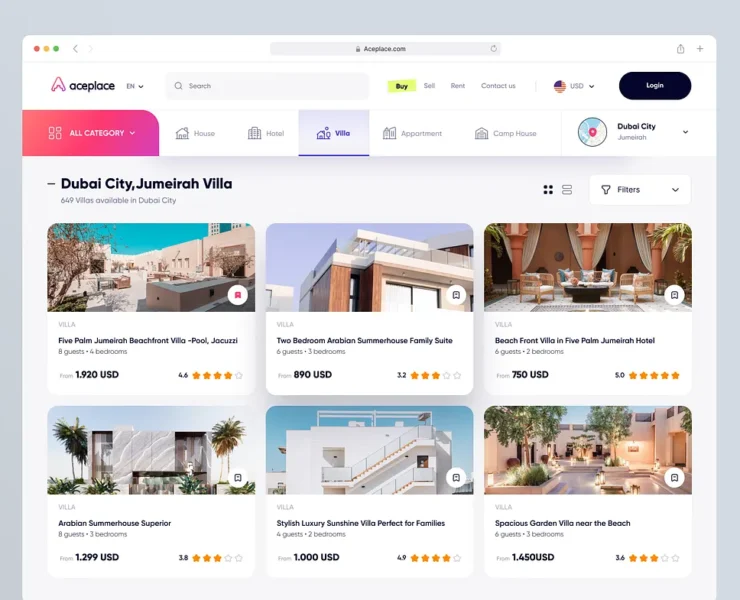The Smartest Way to Grow a Directory (Without Ads)
Most directory founders make the same mistake: they start running paid ads too early. They burn through their budget, drive traffic that doesn’t convert, and wonder why growth stalls.
Here’s the truth: Paid ads don’t work in the beginning. Why? Because directories succeed on brand authority, SEO, and trust—not quick, paid traffic. If no one knows your directory or trusts its listings, why would they sign up or return?
If you want long-term success, you need to become the go-to resource in your industry. Here’s exactly how to do that without wasting money on ads.
1. Build a Directory People Actually Want to Use
Before even thinking about growth, ask yourself: Would I actually use this directory? If your directory isn’t valuable to users on its own, no amount of marketing will save it.
How to do it right:
- Go hyper-niche – A generic business directory won’t stand out. Instead, specialize in one industry (e.g., “Luxury Wedding Venues” instead of “Event Spaces”).
- Ensure high-quality listings – If users find incomplete or outdated listings, they won’t return. Fill it with handpicked businesses that matter.
- Make search easy and useful – The faster users find what they need, the more likely they’ll come back.
Example: Clutch.co dominates the B2B service provider space because it prioritizes quality reviews and well-organized categories over sheer listing volume.
2. SEO: Your #1 Growth Channel
Directories live and die by SEO. Unlike marketplaces, where repeat transactions drive growth, directories depend on organic traffic from search engines.
How to win with SEO:
- Optimize every listing – Each business page should be a mini SEO powerhouse (business name, keywords, reviews, and unique content all matter).
- Create high-value content – Write in-depth industry guides, “Best of” lists, and comparison articles to attract inbound traffic.
- Internal linking matters – Make sure your categories, listings, and blog posts link to each other to help Google understand your site structure.
Example: Yelp dominates local search by structuring its listings perfectly for SEO, making them the top result for nearly every business type.
3. Leverage Free Listings to Get Initial Supply
If businesses aren’t reaching out to be listed yet, list them yourself. You can’t expect people to sign up for an empty directory.
How to do it:
- Manually add high-quality listings – Populate your directory with key businesses in your niche.
- Offer a free trial or basic listing – This removes friction and encourages more businesses to claim their profile.
- Reach out personally – Let businesses know they’re listed and encourage them to update their profile (which also builds engagement).
Example: G2 started by aggregating software reviews and letting companies claim their listings for free. Once they reached scale, they introduced paid placements.
4. Get Featured Where Your Audience Already Exists
Instead of begging businesses to join, go to where they already spend their time.
Tactics that work:
- Partner with industry influencers – Have them mention or link to your directory.
- Join and contribute to industry forums – Provide value first, then introduce your directory as a resource.
- Get listed in relevant directories – Yes, directories should use other directories to build backlinks and credibility.
Example: AngelList leveraged its reputation in startup circles to become the go-to directory for tech investors and founders.
5. Turn Your Directory Into a Community
Directories that feel like static lists of businesses don’t work anymore. People want engagement, recommendations, and real user feedback.
Ways to build engagement:
- Enable reviews and ratings – Encourage users to share their experiences with businesses listed in your directory.
- Create an industry newsletter – Keep users engaged with updates, business spotlights, and new listings.
- Host virtual events or webinars – Position yourself as the industry hub by offering valuable discussions.
Example: Product Hunt didn’t just list products—it built a passionate community around tech launches.
The Bottom Line: Become an Authority, Not an Ad Buyer
Growing a directory without ads isn’t just possible—it’s the smartest strategy. Paid traffic is fleeting, but SEO, brand trust, and community-building create a long-term competitive moat.
Instead of wasting money on ads, focus on: ✅ Building a niche directory people actually need. ✅ Mastering SEO to get free, high-intent traffic. ✅ Filling your directory with high-quality listings upfront. ✅ Getting featured in the spaces your audience already trusts. ✅ Creating engagement through reviews, newsletters, and community efforts.
The directories that win are the ones that become the go-to resource for their industry—not the ones that throw money at ads and hope for the best.
Build smart. Grow organically. Dominate your niche.



